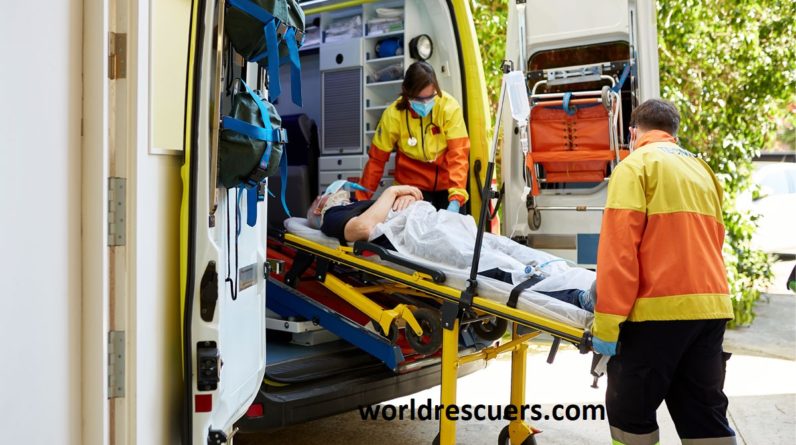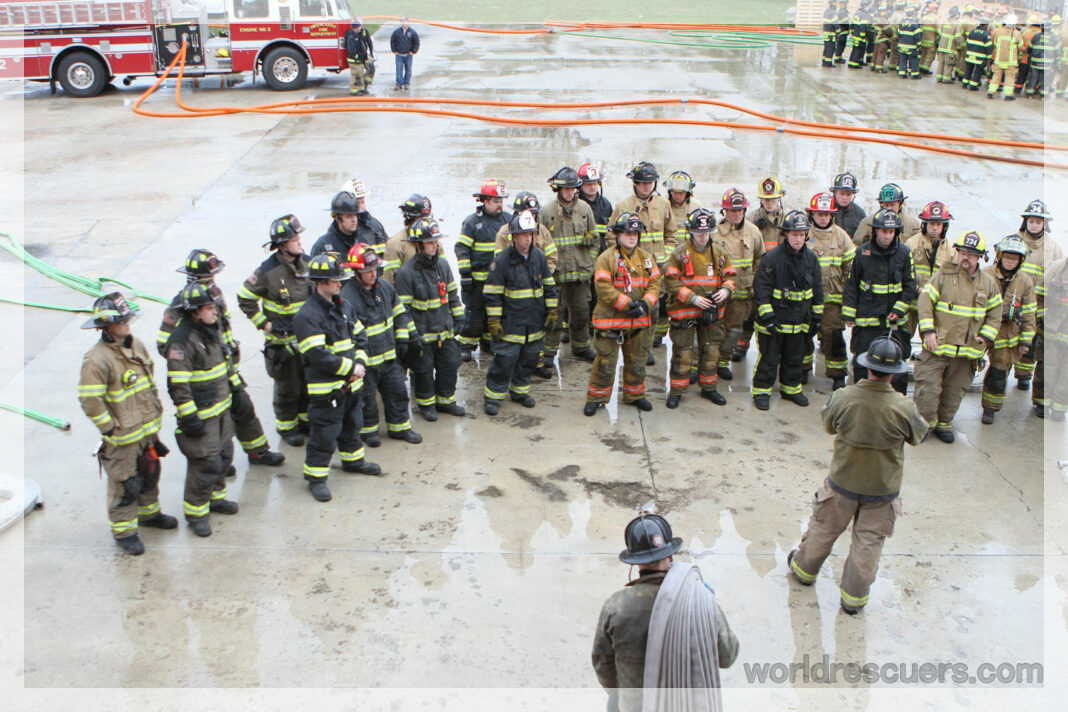
The answer to what is ems is for emergency medical services. EMS professionals provide pre-hospital emergency medical care or management. People call EMS when they have had an accident or are experiencing a medical emergency. Medical emergencies include heart attack, difficulty breathing, a fall or accident, drowning, cardiac arrest, stroke, drug overdose, acute illness, etc. EMS professionals can provide basic and advanced medical care at the scene of an emergency and en route to a hospital in an ambulance.
Coordination between EMS and Rescue Teams
The use of heavy tools and techniques is important in cutting and bending the metal pieces of the vehicle. But the exact way of extrication of the trapped victims is also important. In many cases, victim extraction’s Fire and Rescue elements conflict with the EMS procedures adopted by Rescue Teams.
Individual capacity and structure of an organization are also a part of the issue. But competing priorities between these two are the core reasons for conflicts.
An ordinary Firefighter cannot satisfy by answering the right way of victim extrication from a vehicle. Most often, firefighters will talk about the tensile strength of steel and modern tools used for cutting and breaching. A Firefighter would not be able to talk about the same procedure of victim extrication that the EMS team used. This makes sense, as modern vehicles now require highly skilled technicians for vehicle extrication.
Similarly, EMS providers would be unawarded by the pre-mentioned features. EMS providers will discuss the medical challenges while providing emergency care in a cramped and noisy space. They will also talk about the critical or golden period in which the victim’s survival chances are pretty high.
Both EMS and Fire and Rescue are specialized task forces. The efficient simultaneous working of both teams required well coordination and understanding as the uncoordinated efforts of the teams went wasted.
The coordinated efforts of EMS and fire-rescue professionals lead to efficient extrication or evacuation of victims and improved trauma care management. To obtain this level of coordination, chiefs, officers, and firefighters should coordinate the extrication effort horizontally across fire rescue and EMS and vertically from the incident commander to individual firefighters, EMTs and EMTs and paramedics.
When rescuers of any cadre use a coordinated approach to extrication, they leave the “tools and tasks” decisions to the fire-rescue experts. This should be done by ensuring the fire-rescue team gets the accurate information they need from the experts in patient care.
In short, rescuers and firefighters need to decide the why, when and how of extrication of victims, but they must base upon EMS assessment of who, what and where.
The four Stages of Coordination between Extrication and EMS Teams
There are four key stages of an extrication process where coordination among responded groups is vital to a successful effort.
Stage 1: Arrival; U Can
A good scene size-up determines how the rest of the operation will go on. Every professional is required to assess as per the assigned role. This effort of an individual will help the leader calculate the final risk factor involved in the operation. This is the very essence of the concepts of situational awareness and crew resource management.
Among the many size-ups, the simple and easy one is “U-CAN.” This abbreviation can help to focus on the key elements involved in the process of scene size up of any operation;
- Unit: Addressed the belonging of professional (Belong to which unit?)
- Conditions: What hazards are we facing? Or might face
- Actions: What is the next thing I need to do? To make the working safe.
- Needs: What do I need to do it? To assess the resources.
Stage 2: Access
Most professionals ignore this step, whether they belong to EMS or Fire Rescue. The first responder’s prime duty is to assess and gain access to the scene or vehicle. Perform the check around 720+ vehicles (360-degree outer circle survey, 360-degree inner circle survey, plus above and below the vehicles). This check improves the working team’s situational awareness as it helps identify hazards that must be dealt with while working.
After stabilizing the vehicle and turning it off, the responder should access the trapped victim. The EMS professional, if required, maintain the initial contact with the victim and provides possible care. This care primarily includes EMS, ALS, BLS or any other required to save a life. The Immediate life threats may include (MARCH) the following;
- Massive haemorrhage- Blood Loss
- Airway difficulties- Airway obstruction
- Respiratory emergencies- Shortness of breath
- Circulation problems- blood circulation
- Head Injury requires immediate victim extrication
In the situation of an Inside vehicle, EMS professionals can communicate information in the format of CAN:
- Conditions inside the vehicle- Overall scenario
- Actions the EMS professional Inside the vehicle is attempting
- Needs of the in-the-vehicle EMS professional to complete these tasks.
Stage 3: Action
The extrication plan developed after risk assessment should be well communicated to all teams. This plan should address the immediate medical priorities with the strategy and tactics necessary for patient extrication. The EMS section of the plan often needs immediate implementation by the EMS Professional. The responder having EMS training, regardless of agency or ALS responder status, as long as they are trained and equipped to operate in the extrication area, are known as EMS professionals.
The priorities in the extrication plan must deal with the MARCH problems most threatening to a patient’s life. These conditions can be fatal, but EMS professionals can deal with virtually all of them in the first few minutes of patient contact.
HEMORRHAGE control BY FOLLOWING THE 3 Ds:
- Detect -Find the source of bleeding
- Direct pressure or press the bleeding site
- Devices- use tourniquets, clotting gauze, bandages etc.
PREPARE FOR PATIENT MOVEMENT
In parallel to the extrication process, fire rescuers can move the expected extricated victim through an ambulance after providing necessary care. During the extrication process, the team leader should ensure that belts are cut, glass is entirely removed, sharp edges are covered, and hoses and equipment are cleared along the path of the patient’s exit.
Stage 4: After the incident
After the patient(s) are removed from the vehicle(s), EMS aspects of extrication remain.
Pictures: As real evidence Video and photographs of extrication incidents can contribute to responders’ training and education. However, it would be the responsibility of the professional whom the leader has assigned the responsibility.
The team leader should ask the following QUESTIONS at the closing of the incident site:
- Are all the responders safe?
- Were there any near misses while managing the incident?
- What did we do well during this incident?
- What could we have done to improve safety?
POST-TRAUMATIC STRESS DISORDER (PTSD)
Incidents involving many victims, young children or fellow emergency responders can have a significant psychological and emotional impact on the responding professionals. A good team leader should also keep in mind their psychological well-being.

Hi, I am John Smit a Captain in Fire Department City of Newyork with over years of experience in the field of Firefighting and HSE. My passion for fire safety started when I was a young boy and witnessed a neighbor’s house go up in flames along with precious lives. Since then, I had dedicated my life to ensuring the safety of buildings, properties, and individuals in case of a fire and medical emergencies.

